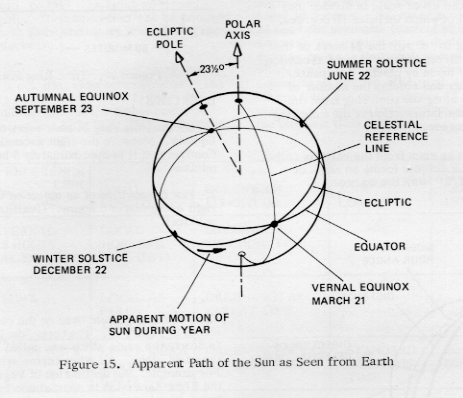
|
Another important point which must be thoroughly understood is the establishment of a reference line in celestial space which serves the same purpose of azimuth-type reference as does the Greenwich Meridian of the Earth Globe. As the Earth moves about the sun on its annual journey, the apparent path of the sun through the sky as seen from Earth, appears as shown in Figure 15. There are four significant points on this path:
|
The celestial reference line is defined as the meridian that passes through the vernal equinox. All references comparable to E longitude are called RIGHT ASCENSION. References comparable to W longitude are called SIDEREAL HOUR ANGLE and are usually specified in hours and minutes from the Vernal Equinox. |
||||||||
|
Page 9 |